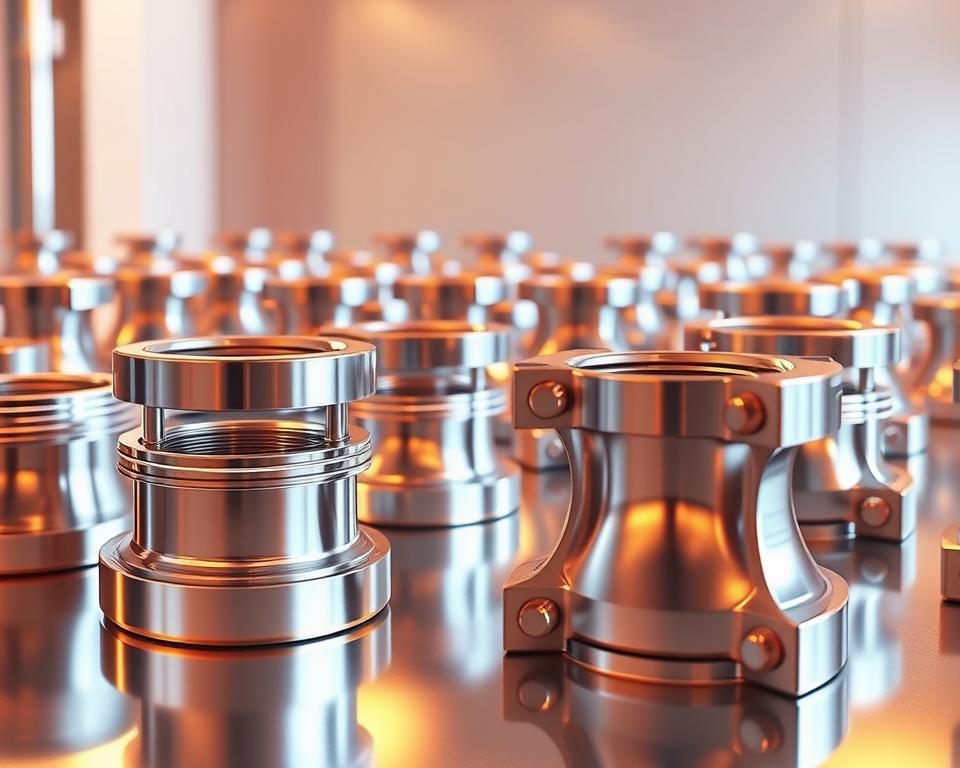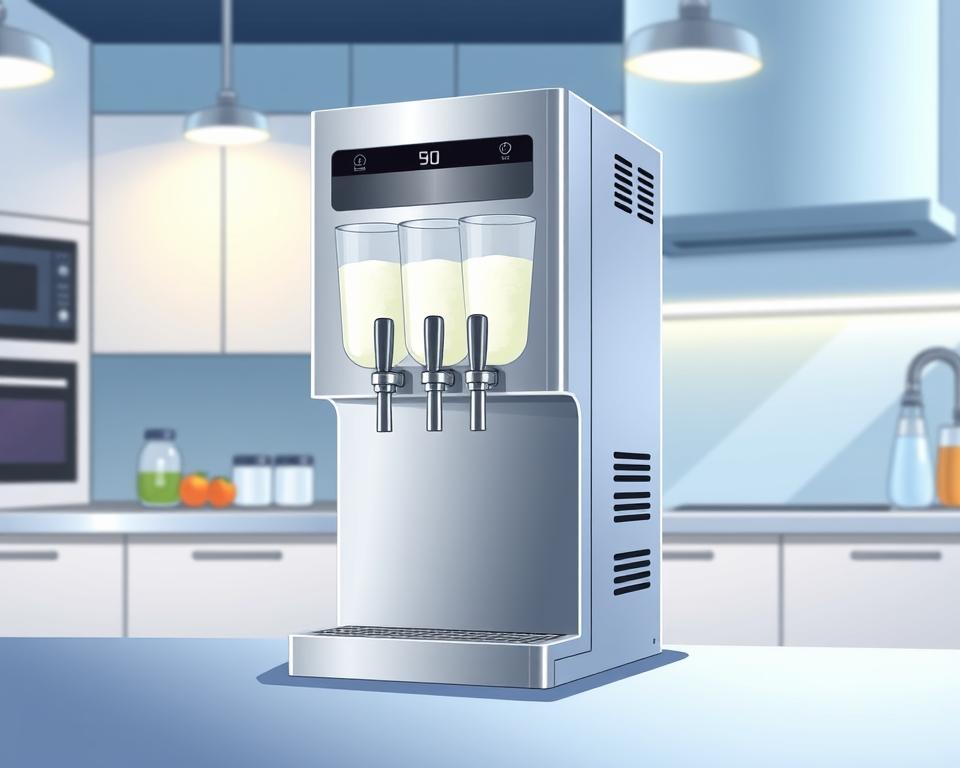Chromium Oxide Green Applications in Refractories Discussed.
It’s a fact that about 80% of the world’s chromium output is used for producing refractory materials? Green chromium oxide, scientifically known as Cr2O3, stands out for its exceptional properties. These qualities turn it into essential in applications involving high heat. It enhances durability and oxidation resistance in numerous production processes.
This discussion will explore the extensive uses of chromium trioxide in refractory materials. We will underscore its role in today’s industrial landscape. Let’s discover why this versatile material is indispensable.
Overview of Green Chromium Oxide
Green chromium oxide is a vibrant green powder renowned for its versatility and durability. It is important in the refractory industry due to its special characteristics. This substance doesn’t just enhancing the visual appeal of items, but also offers notable industrial gains for demanding applications.
In the refractory industry, green chromium oxide is essential. It boosts the thermal endurance and longevity of substances in extreme environments. This applies to tasks in steel manufacturing and glass manufacturing. As industries evolve, the material’s importance increases, offering solutions for thermal challenges where reliability is critical.
Chromium oxide green is more than just a pigment; it’s a vital component for high-performance industrial applications. Its flexibility and resilience make it a crucial element in the creation of reliable refractory products.
Understanding Chromium Oxide and its Makeup
Green chromium oxide, also referred to Cr2O3, is a substance made up of chromium element and oxygen. Its structure of chromium oxide displays unique features that enhance its role in multiple fields. This compound’s chemical structure is strong and secure, delivering durability in challenging environments.
The refractory properties of chromium oxide are exceptional in applications needing compounds that tolerate extreme heat. It demonstrates a strong ability to withstand heat stress. This renders it suitable for smelting and other industrial processes where temperature is crucial.
Grasping the intricacies of the makeup of chromium oxide helps industries utilize its built-in strengths. Its ability to endure pressure boosts overall efficiency. This positions chromium oxide as a leading candidate among heat-resistant compounds.
Importance of Chromium Trioxide in Refractory Applications
Chromium trioxide is key for the efficiency of refractories due to its special qualities. It boosts the reliability and durability of these substances in challenging settings. This knowledge is key for grasping its function alongside green chromium oxide in various applications.
Role of Chromium Trioxide in Enhancing Stability
Heat-resistant compounds must withstand extreme heat without breaking down. Trioxide of chromium enhances their heat tolerance and structural integrity. This results in less deterioration, making it vital for industries requiring durable compounds.
Comparative Analysis of Green Chromium Oxide and Chromium Trioxide
Chromium oxide and chromium trioxide have unique contributions in thermal-resistant products. Both are key, but differ in their features:
| Characteristic | Green Chromium Oxide | Chromium Trioxide |
|---|---|---|
| Thermal Stability | Good thermal stability | Boosted heat resistance |
| Use | Regularly found in refractory compounds | Ideal for high-temperature environments |
| Durability | Average strength | Greatly improves longevity |
This side-by-side look shows the unique contributions of chromium oxide and trioxide of chromium to thermal-resistant substances. Their distinct properties improve performance and durability in various industrial settings.
Thermal Endurance Features of Green Chromium Oxide
Green chromium oxide displays exceptional traits, making it suitable for thermal uses. Its melting point goes up to 2400°C, offering unsurpassed build quality in harsh environments. This is vital for sectors requiring strength, particularly in iron and steel manufacturing.
Melting Point and Structural Integrity
Chromium oxide green is renowned for its high-temperature fusion point, vital for maintaining refractory structural integrity. This thermal endurance enables it to withstand extreme heat without breaking down. Its melting resistance makes it essential in industries requiring reliability.
Uses in Metalworking
In iron and steel production, chromium oxide green’s thermal tolerance is invaluable. It’s often used in refractory bricks for kilns and kilns. These bricks endure extreme environments and need to maintain integrity. Chromium oxide green’s heat resistance makes them effective, improving performance in steel production.
Advantages of Chromium Oxide Green in Refractories
Chromium oxide green notably improves refractory compounds, vital for various industrial uses. It boosts physical traits and resistance to oxidation. These upgrades improve the durability and effectiveness of refractory products.
Boosting Physical Strength
Incorporating chromium oxide into heat-resistant compounds notably boosts their structural qualities. Key benefits include:
- Increased hardness: Chromium oxide green’s toughness increases materials’ ability to resist wear against wear.
- Greater resistance to abrasion: Its makeup minimizes degradation from constant wear, lengthening the lifespan of materials.
- Higher flexural strength: This trait enables heat-resistant materials to resist mechanical stresses, making it ideal for exacting uses.
Resistance to Oxidation in Heat-Intensive Uses
Green chromium oxide’s ability to withstand oxidation is crucial in extreme heat settings. The gains are:
- Prolonged lifespan: Thermal-resistant substances endure more, withstanding intense heat.
- Boosted performance: They experience less material loss, maintaining consistent performance in applications.
- Reduced upkeep expenses: Less need for substitution of components reduces expenses for sectors using refractories.
These chromium oxide green advantages enhance refractory performance and promote eco-friendliness. They extend service life and minimize environmental impact.
Understanding the Uses of Chromium Oxide Green in Refractories
Chromium oxide green has grown essential in many industries because of its exceptional features. It performs well in different industries, from iron production to glassmaking. Its importance as a critical component in heat-resistant compounds shows its value.
Applications in Various Industries
Green chromium oxide is vital in several sectors for improved efficiency. Here are the primary fields and their major roles:
- Iron and Steel Production: It’s applied in manufacturing refractory components and thermal-resistant castables, ensuring thermal stability and resistance to wear.
- Glass Manufacturing: In heat-resistant coatings, it helps maintain high temperatures and provides resistance to chemical reactions.
- Ceramics Manufacturing: As a pigment in ceramic coatings, it provides coloration, strength, and build quality.
- Concrete Manufacturing: It boosts the quality of refractory materials for intense thermal applications.
Multiple Applications of Refractory Materials
Chromium oxide green’s versatility isn’t limited to individual sectors. Its applications span a wide range, such as:
- Thermal-resistant brick applications
- Castable refractories for challenging settings
- Heat-resistant furnace linings
- Ceramic materials requiring thermal durability
This diverse field of applications demonstrates chromium oxide green’s key role in enhancing industrial efficiency. Its unique qualities enable companies adapt to current manufacturing needs, promising better performance and material longevity.
Main Industrial Applications of Chromium Oxide Green
Chromium oxide green is essential in many fields, famous for its versatility and performance. It is frequently utilized in the sector of refractories, enhancing thermal stability and physical resilience. This substance is critical in materials created for harsh environments.
In the manufacture of heat-resistant bricks and inner linings, green chromium oxide is notable. These products are essential in high-temperature settings like ovens, heat chambers, and burning devices. Incorporating green chromium oxide boosts their effectiveness, promising they maintain integrity and perform consistently.
- Ceramics Production: Green chromium oxide is important in clay-based products, boosting color consistency and build quality.
- Metalworking: It is applied in metallurgy for tools and items requiring heat tolerance.
- Glass Manufacturing: In glassmaking, chromium oxide green delivers the longevity of furnace linings.
This compound is important outside standard uses but also in modern materials. The drive for eco-friendly practices is encouraging its adoption in next-generation heat-resistant compounds.
As industries shift toward performance and effectiveness, chromium oxide green proves indispensable. Its broad field of applications highlights its role across various sectors. This confirms its importance in the advanced thermal-resistance industry.
Methods of Producing Chromium Oxide Green
The manufacture of green chromium oxide uses several recognized procedures, each with specific pros and challenges. These approaches are vital for producing pure green chromium oxide, essential for its wide-ranging uses. Processes such as combustion, hydrothermal, and precipitation play pivotal roles in production and quality control.
Common Preparation Methods
Many typical manufacturing processes are applied in chromium oxide green manufacture. These include:
- Combustion Method: This process entails the burning of chromium compounds with carbon-based substances. It is efficient and has a reduced impact on the environment.
- Water-Based Technique: This method employs the reaction of chromium-based materials in an liquid phase under elevated pressure and thermal conditions. It creates high-purity products.
- Solid Formation Process: This method involves the solid formation of chromium oxides from water-based suspensions. It enables regulation over particle size and structure.
Each method provides distinct benefits, such as affordability and ability to scale, but also comes with issues like refinement and irregular granule dimensions. Choosing the appropriate process strongly influences the final product’s properties and its suitability for particular uses.
Maintaining Standards in Chromium Oxide Green Production
Ensuring product quality is vital in the manufacture of green chromium oxide. It guarantees the final product adheres to required norms for cleanliness and regularity. Main areas of quality control consist of:
- Consistent examination of base substances to ensure high-quality inputs for green chromium oxide production.
- Monitoring of production parameters, such as heat and compression, during the different preparation methods.
- End-result analysis for structure and characteristics, making sure it meets standards with target characteristics.
Reliable monitoring techniques improve the consistency and efficiency of green chromium oxide for its various industrial applications. This underscores the importance of these creation methods in the complete manufacturing system.
Sustainability in the Production and Use of Chromium Oxide Green
The push for sustainability is transforming the production of chromium oxide green. Environmental protection is now a top concern as manufacturers look for ways to lower environmental impact. By adopting green techniques, they cut down on pollutants and reduce resource consumption.
Integrating sustainability into the manufacturing of green chromium oxide meets both legal standards and market expectations. Companies are now more conscious of their eco-footprint. By incorporating innovative techniques, they enjoy benefits such as:
- Using waste materials in production, which minimizes new resource extraction.
- Improving power consumption in creating products.
- Optimizing material reuse to reduce ecological impact.
Environmentally responsible usage of chromium oxide green is also obvious in various sectors. For instance, it is instrumental in emission reduction systems, lowering harmful emissions. This demonstrates the vital role of eco-conscious practices in the refractory industry.
| Technique | Description | Environmental Benefit |
|---|---|---|
| Resource Utilization | Using recycled materials for production | Minimizes raw material extraction |
| Power Consumption | Methods to improve power efficiency | Cuts down on greenhouse gases |
| Emission Control | Using emission-lowering devices | Lessens harmful pollutants released |
| Waste Minimization | Efficiently reusing by-products | Reduces landfill usage |
As industries focus on sustainability, chromium oxide green production and application become crucial. They illustrate how environmental protection and innovation can work together, leading to a more eco-friendly tomorrow.
Exploring Future Development in Refractory Applications
The field of refractory industry is set for significant transformation, notably with the advancements in green chromium oxide. As companies focus on sustainability, the future development of this compound takes on added significance.
New innovations are driving innovation in the use of green chromium oxide, which may involve:
- Improved heat resistance for improved durability in challenging settings.
- Advanced mixtures that increase its role in metalworking and ceramics.
- Innovative manufacturing techniques to minimize ecological footprint while maintaining quality.
Bringing chromium oxide green into advanced refractory applications guarantees strong results for multiple fields. Relentless R&D will harness this material’s unique properties. This promises it stays important in innovative refractory solutions.
By capitalizing on these breakthroughs, industries can boost the performance and sustainability of their refractory products. This makes the future of green chromium oxide extremely bright.
Final Thoughts
Chromium oxide green is a vital substance that improves the strength and efficiency of refractory products across multiple industries. Its distinct characteristics, such as thermal tolerance and oxidation resistance, are vital for iron and steel manufacturing and ceramics production.
The exploration of chromium oxide green’s roles demonstrates its adaptability and significance in current industrial needs. Future developments in manufacture enhance its potential, ensuring it stays important for demanding roles.
As the push for sustainable manufacturing expands, the use of chromium oxide green is likely to expand. Its role in producing eco-friendly refractories demonstrates its key function in the modern refractory industry. This guarantees improved performance and efficiency in a fast-changing industrial field.



